Traditionally, this site has focused on review and informational articles on digital pianos. I’ve written some articles on upright pianos and acoustic pianos, but not much. I’d like to change that, as I believe there’s a significant portion of this blog’s readership that would benefit from review content around upright and acoustic pianos.
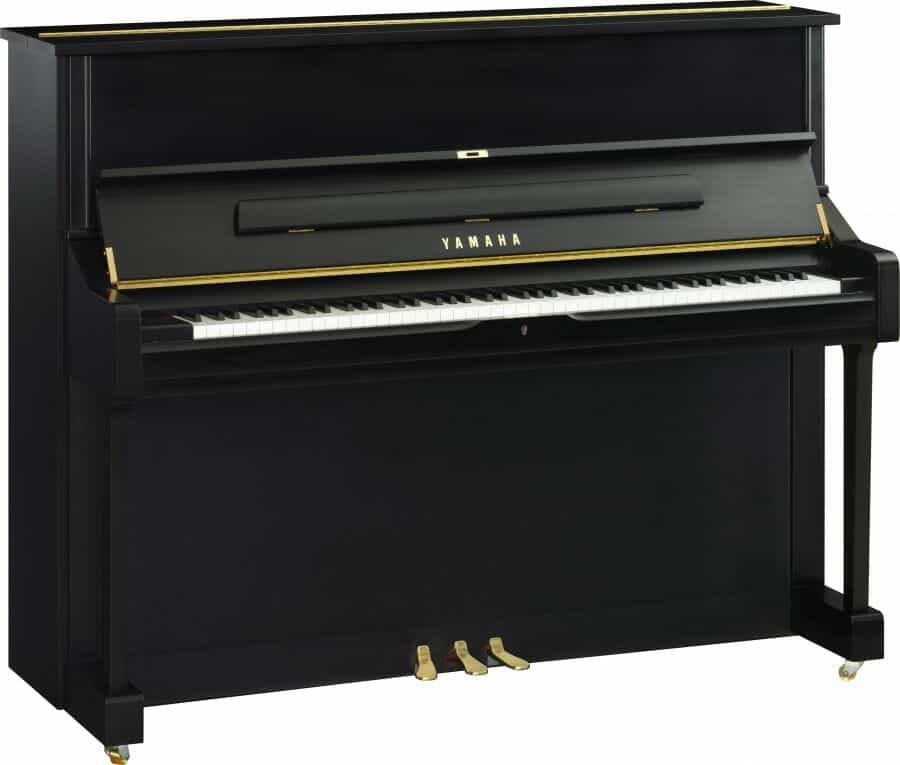
In this article we’re going to be having a look at one of the most popular (probably the most popular) upright pianos ever produced: the Yamaha U1. I’m going to preface this by saying I own a Yamaha U1 and have done for around five years. I think it’s a wonderful piano in every respect, and no pianist will ever go wrong owning one; whether you’re a beginner or a classical concert pianist, it will be suitable for you.
But what makes the Yamaha U1 so good? Why is it the piano of choice for institutions, schools and pianists all over the world?
Our Verdict; Yamaha U1 Review
Yamaha U1
Should you buy one?
Yes
No
Final Score
Our Rating: 4.5 / 5 stars
Yamaha U1 Specifications
As you can see, a fairly standard set of specifications for an upright piano. However, this is anything but a standard piano. These pianos are built exceptionally well, and are very versatile.
Let’s get into what makes the Yamaha U1 one of my favourite upright pianos.
High-quality Japanese Manufacturing
The piano market today is a real mish-mash of manufacturers making pianos in different countries of the world. As you might expect, a lot of pianos are made in China; some are made in Indonesia and Japan, and some are made in Europe and the USA.
You tend to find that the higher quality pianos are made in Europe, the USA and Japan, with more budget oriented pianos made in China and Indonesia.
There are exceptions to this rule, however; Feurich pianos are made in China and these are a serious competitor to Yamaha’s Japanese built range, both in terms of price, tone and build quality.
I plan to write a review on the competitor to the U1 fairly soon; the Feurich 122. I used to own one of these too, and it was a fantastic piano.
Yamaha U1 Competitors; what else is on the market?
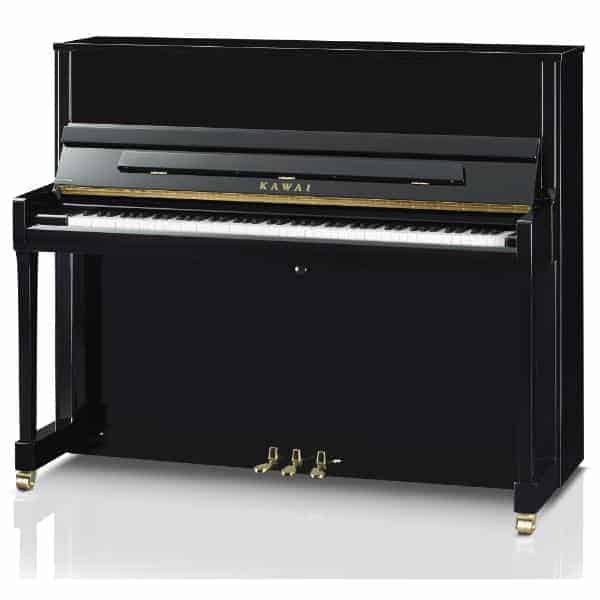
Kawai K300
Another Japanese brand, these pianos are of exceptional quality, with carbon fibre parts and a mellow, soft tone.

Feurich/Hailun 122
Made in China to the highest specifications, a very European-sounding piano perfect for beginners and pros alike.
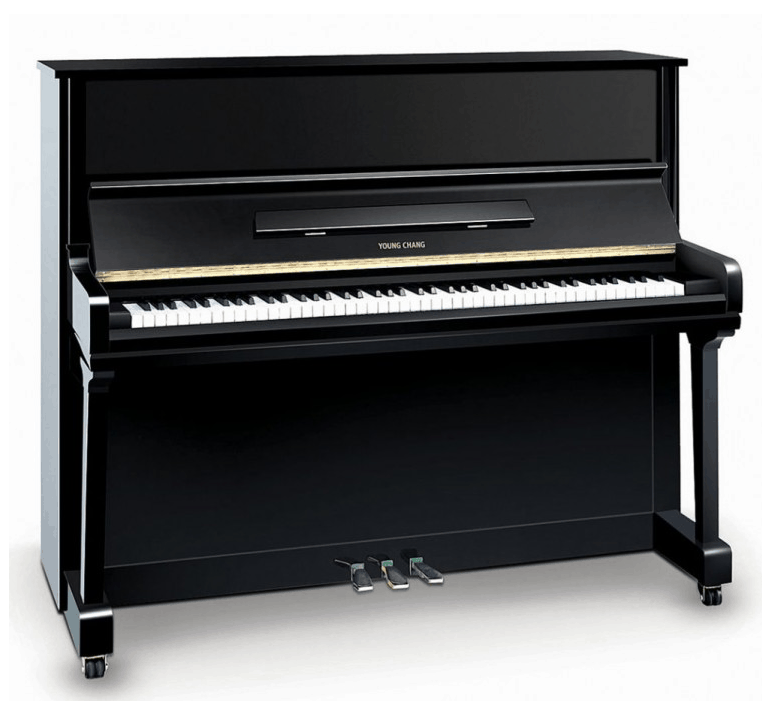
Young Chang Y121
A Korean-made piano; a tone perhaps even brighter than the Yamaha, but good for the budget-oriented.
However, Yamaha’s U1 range has been made in Japan since the 1960s. The manufacturing facilities there have had 50 years to hone their craft. Interestingly Yamaha used to have manufacturing facilities in the west; Yamaha used to own a British piano company called Kemble and used to make U1s in their UK factory.
This doesn’t happen any more and Yamaha’s U1 line is now all made in Japan. As a result, you can be assured of a highly consistent level of quality and performance from any U1 you buy, whether it’s brand new or 30 years old.
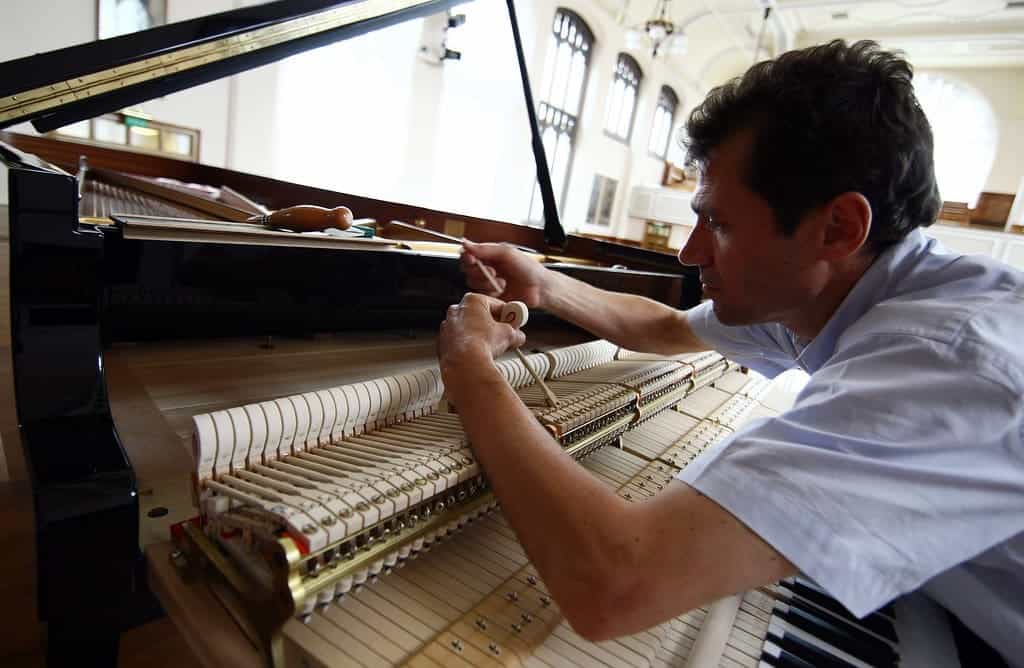
Manufacturing is an art form in Japan, and Japanese factories are some of the most automated in the world. Japanese pianos, whether they are Yamaha, Kawai or other brands, are among the most uniformly made pianos, and are designed first and foremost for servicing and longevity.
Despite the fact they may be more expensive than a piano built elsewhere, you won’t go far wrong buying a piano made in Japan.
Fine touch and rich tone
All U1’s I’ve tried have a very rich and resonant tone. It’s very suitable for classical music of any era, but also for jazz, pop and rock. Yamaha have done well to build a piano with such a robust and versatile tone.
In many ways the U1 doesn’t really excel in any one area in this regard; it’s certainly not the perfect sound for many of these genres, but it’s an exceptionally good sound nonetheless.
I mainly use my Yamaha U1 to play classical and jazz music, and I find that no matter what I’m playing, it’s always very easy to mould and sculpt the sound to the music I’m playing. Very few other pianos give you this scope and this freedom of expression.
One thing that Yamaha U1s get a little bit of a bad reputation for is the brightness of their tone. And I’ll admit, Yamaha pianos are bright. Yamaha pianos probably produce the brightest tone of the mainstream manufacturers, with the exception of Essex pianos which have a tendency to get horribly bright, even a short while after a tuning.
This isn’t necessarily a bad thing. There is such a thing as too mellow a sound, and the crisp, live sound you get from a Yamaha upright is very pleasant to listen to. It isn’t as mellow as a Steinway, but I’d probably put it on par with Bechstein pianos.
One thing to think about (and I’m not sure as to the science of this, and why it happens with Yamahas and not other pianos) is that Yamahas do tend to get brighter with age. In fact, I even notice this on my own piano. If I don’t have it tuned for a while (one year or more) the tone does become brighter than I would like. This is easily resolved by asking the tuner to tune it and voice the piano down a little, and then it becomes much more pleasant to play.
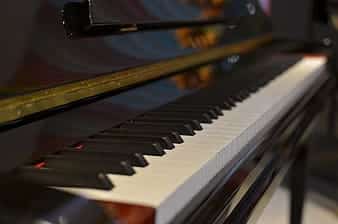
If you like your piano to have a crisp, lively sound, you won’t go far wrong with a Yamaha U1.
Speaking of tuning, in my experience Yamaha U1s hold their tuning better than almost any other piano I’ve played. Again, I’m not sure as to exactly why this is, but it’s a testament to the quality of the manufacturing. Even after being practiced on for three or four hours a day, my Yamaha still holds a tune very well. Newer Yamahas are even more robust; when your piano has settled into your home, you’d probably get away with having it tuned once per year or less.
Precise, light action
The Yamaha U1’s action is exceptionally precise. As we’ve mentioned, the sound is very suitable for any genre of music, but it’s important to note that the action is too. It’s not too heavy, and it’s not too light. It is on the lighter side, but the control you get over your music is almost unmatched in anything but the most expensive pianos.
For example, when playing demanding, virtuosic music with constant large shifts in dynamics, the Yamaha U1 responds admirably. I’ve played all but the most difficult music; the late Beethoven sonatas, Chopin Ballades and Scherzi, even a piano duet version of Stravinsky’s Rite of Spring, and I can tell you with confidence that my U1 performed every time.
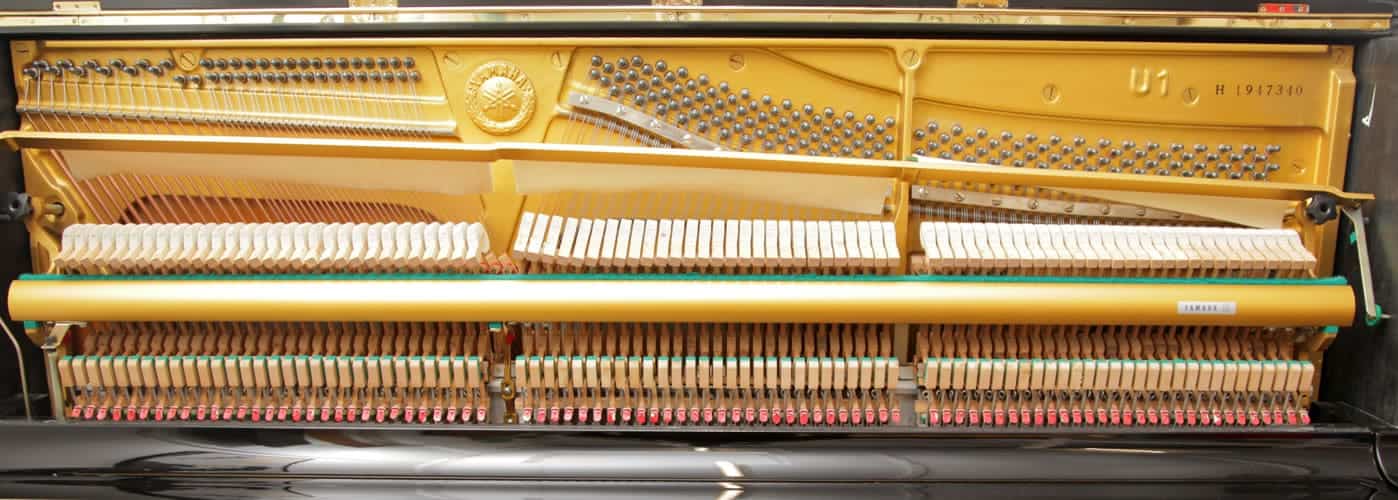
And again, my U1 is several years old; the newer models are almost certain to perform even better. You won’t ever find yourself limited by a Yamaha U1.
The action gives you the ability to put a lot of power into your playing without the production of a harsh, overly bright sound, as well as the ability to really dial it back and produce some of the most wonderful tonal colours.
It’s as suitable for playing Bach, Mozart and Chopin as it is it is for playing Liszt, Debussy, Rachmaninov, Kapustin, etc; there’s not a genre of music I can think of that the Yamaha U1 wouldn’t be suitable for.
For the most advanced players, you get a wide palette of tonal possibilities, and an ability to easily mould and control the sound. A freshly tuned Yamaha U1 is exceptionally satisfying to play.
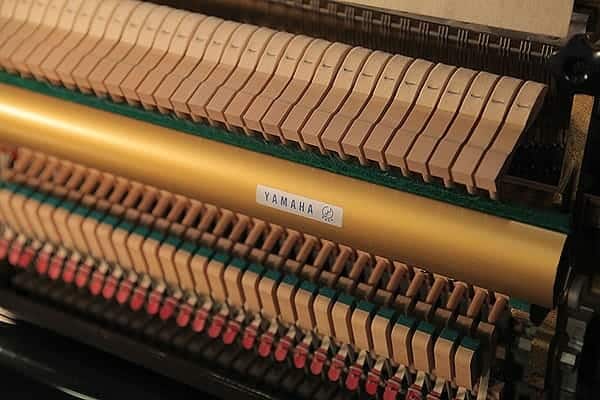
One thing about the Yamaha U1 that I will say is that if you leave the piano too long without having it looked at by a technician or regulated, you’ll find that the action becomes a little uneven, and some notes become slightly heavier than others.
This is normal in pianos that haven’t been serviced in a while, but I find that it’s more noticeable on the Yamaha U1 than on other pianos. This isn’t a big deal in my opinion, and can be mitigated by having your piano regularly serviced and looked at by a technician.
Exceptionally reliable
One of the things I look for when I look into a piano is how they fare on the used market. This might sound counter intuitive if I’m reviewing a new piano, but there is method to my madness.
A piano with zero used market suggests that the piano is either not reliable, or doesn’t hold its’ value well for a particular reason. This isn’t an issue with the Yamaha U1; this has one of the most robust and active used piano markets out there.
A Yamaha U1 is probably the easiest piano to sell used, because people know how well made they are.
I can testify personally as to the reliability of the Yamaha U1; not once in the five years that I’ve owned mine have I had to replace a part, or have anything at all fixed.
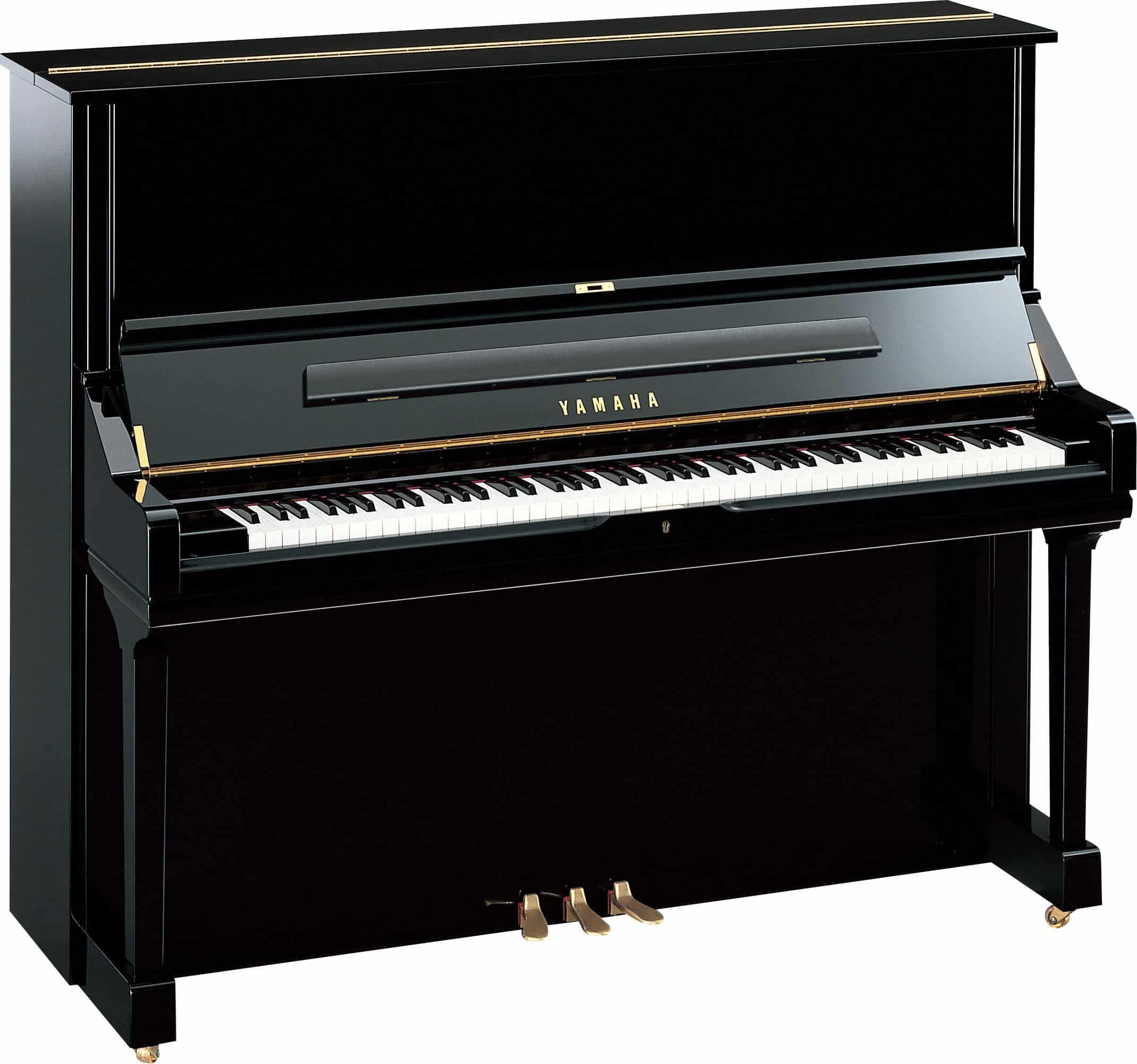
This piano has taken hundreds (probably thousands) of hours of practice since I’ve owned it, as well as a house move, and has taken everything I’ve been able to throw at it. Nothing has broken, nothing is out of place and everything works as it should.
And in all honesty, I haven’t maintained it as well as I should have. I should have had it tuned at least every year; sometimes the piano has gone 18 months without being looked at by a technician without issue.
We’ve mentioned the excellent built quality of these pianos, and it’s easy just to say this, but my personal experience of owning this piano for five years suggests that a Yamaha U1 is probably the most reliable, well made piano you’ll ever own.
Expensive?
One of the drawbacks of a new U1 is that because they hold their value so well, and are so well made, they’re not too cheap. You can expect to pay a minimum of $8,000 for a new model, and up to $11,000 depending on your location and circumstances.
You may be able to get a discount if you contact a piano store during a sale, or if they’re closing down, but generally this is what you should expect to pay.
On the face of it, this seems like a lot of money, and it is, but I really think the kind of value you get is second to none. If you want the piano that’ll give you the best bang for the buck, I really think the Yamaha U1 is the instrument that’ll give you the most piano for the money.
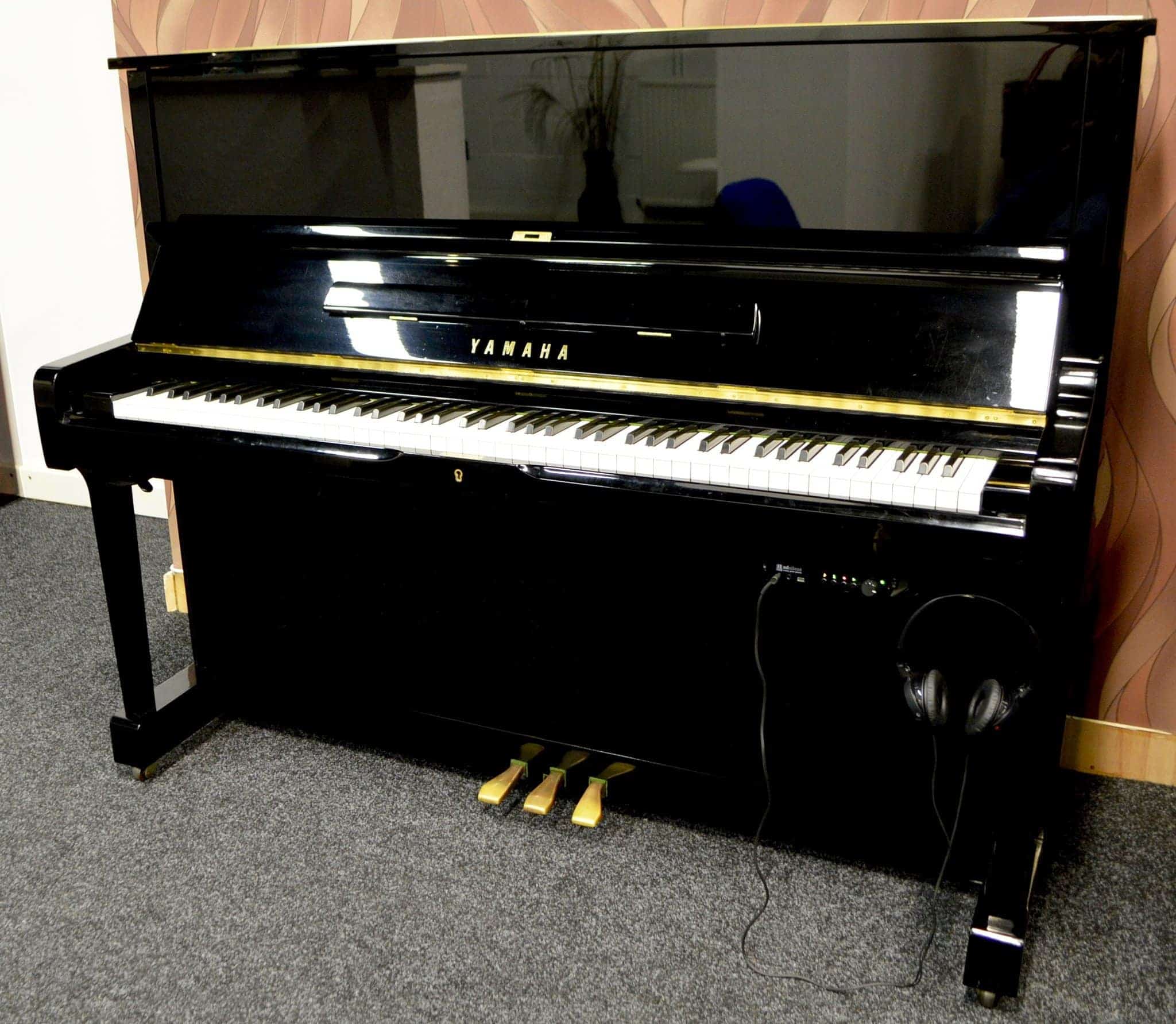
You can do a lot worse for the same money, especially in the used market, and to do any better, you’ll need to spend upwards of $20,000 in my opinion.
In fact, you can even do a lot worse for $20,000; compare any Steinway upright made in the last 20 years or so to the equivalent U1 and in my opinion, the Yamaha wins out every time.
The action and the sound are just better. This isn’t the case with Yamaha grands and Steinway grands; Steinway has Yamaha well and truly beat in this case, but for uprights, Yamaha is king.
If $8,000 is just too much, you can look on the used market, as you should be able to get a decent refurbished model for around $4,000. Just be careful that it’s been refurbished by someone competent and professional; a piano refurbished by a cowboy is just going to cause problems for you in the future.
This is why, for those of you in Europe, I recommend Thomann for used Yamaha pianos; their instruments are refurbished and checked over by qualified, trained technicians, and you’re guaranteed to get a quality piano at an affordable price.
New vs Used?
There’s a lot of concern out there about used Yamaha pianos. Some of these pianos come from Japan, where they’ve been used in schools for 20 – 30 years, sold to a dealer or distributor and then shipped overseas for sale in another country.
This is called a “grey market” piano; simply because the piano was manufactured for the Japanese market and is now being used elsewhere. Yamaha themselves don’t like this practice, but is it something to be worried about?
In my view; no. Most used Yamaha U1s in the US and Europe are grey market pianos. Mine is too. And I’ve had absolutely zero problems with it in the time I’ve owned it. Of course, for the greatest longevity, you’ll want to buy new, but I see no problem at all with a grey market/used Yamaha piano if that’s all you can afford.
Final Verdict
Is the Yamaha U1 the best upright you can buy?

Our Rating: 4.5/5
An excellent instrument in all respects; you will not go wrong with purchasing a Yamaha U1. If you're buying a used one, just be careful, and make sure it's been looked after or refurbished properly. A new Yamaha U1 will last you for years and years, and as long as you look after it, it'll be all the piano you'll ever need.

Great review, but now I’m concerned. Just purchased a 1972 U1 from a dealer who’s been in business since 1984. He has a warehouse full of beautiful pianos. This 1972 U1 looks brand new, and has an amazing rich sound. We’re paying $3,800. Delivered and set up. 10 year warranty. 100% upgrade value if you get it tuned twice a year. Our daughter (19) is ecstatic.
Are we foolish to purchase one this old?
Hi Karen; good question. A piano this old in the US is likely to be a grey market import from Japan. There’s nothing wrong with this; my U1 is a grey market import. $3800 seems a fair price for a piano such as this; I am guessing there has been extensive work done on the piano after it was shipped to the US in order to return it to excellent working order. As long as it’s been looked after and a thorough job has been done in the restoration, I see no reason why this piano can’t last you a very long time. Of course, if corners were cut in the restoration, this may not be the case, but seeing as the dealer is willing to back it with a 10 year warranty I’d say you have little to worry about.
Where did you purchase your piano? We just looked at a 1972 U1 in ok condition and it was 3K more than what you paid without a warranty
Hi! So happy to come across your site! I just purchased a mahogany U1E, SN in mid 4 million from a dealer. Is this a different type of U1 series? I’m wondering what the E means and if it adds anything to my piano’s value.
Hi Cait – thanks for your comment. I’m not 100% on this as there’s not a lot of information out there about this. It seems as though the reason is that different types of U1 had different production runs. Due to this you often see E, D, or H added to the piano’s model. Fundamentally these are all the same piano with slightly minor differences – for example if you compare my U1 (a 1970s U1H) to yours, you’ll probably notice small differences in the felts, the pedals, etc. This is what the “E” means – unfortunately I don’t think it adds anything specific to the value of your piano.
Hi,
greetings from Vienna, Austria. A U1 from the early 80 is offered here by a private seller – so no guarantee. When you talk about restoration, what usually needs to be done, apart from the felt? Not sure if such a purchase is too much of a risk…
P.S.: any experience with Korean made Royale pianos (from the 90s)? They seem to have employed the help of German piano builder Klaus Fenner in order to have a valid sales point but still I couldn´t find a lot on the internet. Ever played one of those?
what about a comparison with Kawai K300 and Feurich 122?
My 1999 U1 is a disklavier. Just updated to the new control unit. Does the disklavier infrastructure have any impact on the overall package from a “play it yourself” point of view?
For many years I was a poor musician who could only afford $500 pianos and $2000 cars. When I got some money, I went to the piano store and played dozens of pianos. The U-1 had a wonderful sound, this one in particular. I play jazz, so I like a bright sound. So much better than the dozens of pianos I play in clubs! Most musicians have their own horn. Regrettably, I can’t take this to clubs, but at least I have the best at home. (OK, I might prefer a Steinway grand, but this is plenty good enough!)
Hi. I’m picking up a U1 used that has a serial number beginning with an H. I think this means it’s made in China. Am I correct? Should I not be buying it?
U1H is not produced in China. For U1H, it was produced in Japan around in the 1970s. U1 are only produced in Japan or Indonesia.
I have a Yamaha U1 – believe was made in 1987. Black. Upright. In immaculate condition. What do you think this is worth?
You can usually find used pianos that are lightweight by checking out used books or classified ads. As a final step, you should consider the brand and year of the model when looking at used pianos online. Used pianos are much cheaper than new ones.
Hi, we are looking to buy a used U1 and found 2 units at a dealer. Both had one previous owner. One is a 2004 that seems well loved (definitely some grooves in hammers), has been regularly tuned (as indicated by tuner business cards and dates taped to interior), and some minor cosmetic wear & tear. It comes with a plug-in humidity regulating unit. The other is a 2008 and looks basically brand new, no discernible wear to hammers, but we don’t know if it was regularly maintained. They are both priced at 6k. My daughter preferred the sound of the 2004, but I’m not sure if it’s because the keys are looser or it’s just better tuned. Is there any concern in a piano that age that maybe wasn’t tuned or serviced for long periods? We would be bringing it home and servicing & playing it regularly.
Hello,
I’m looking at a Yamaha U1 piano certified rebuilt by AMC. The piano was made in 1962. Is this piano too old for purchase? Also, the price they’re asking is almost $6,000. I haven’t spoken with them yet and I’m not sure about shipping cost. I’m in another state and could be anywhere from 500 to 1,000 miles from the seller. Do you think this is a piano that I should consider? I will have to have a specialist check the piano out and that could probably cost anywhere from $100 to $300. I’d like to have a good idea whether or not this piano is worth my investing the money to have it checked out before I make a decision. I would very much appreciate your advice and thank you in advance for any assistance you can give me.
I found a U1J and loved it. Is it worth less than a U1 just because it was made in Jakarta?
I found a 30 year old u1 for 1700 dollars, has one note that doesn’t sound right (likely a cord issue that needs to be replaced) what do you think ? how does it compare to a baldwin 248E that sells for the same price ? what would you choose ?
Hi,
I own a 1962 Yamaha U1.
May I know what’s it worth? Still in working condition.
Thank you n regards!